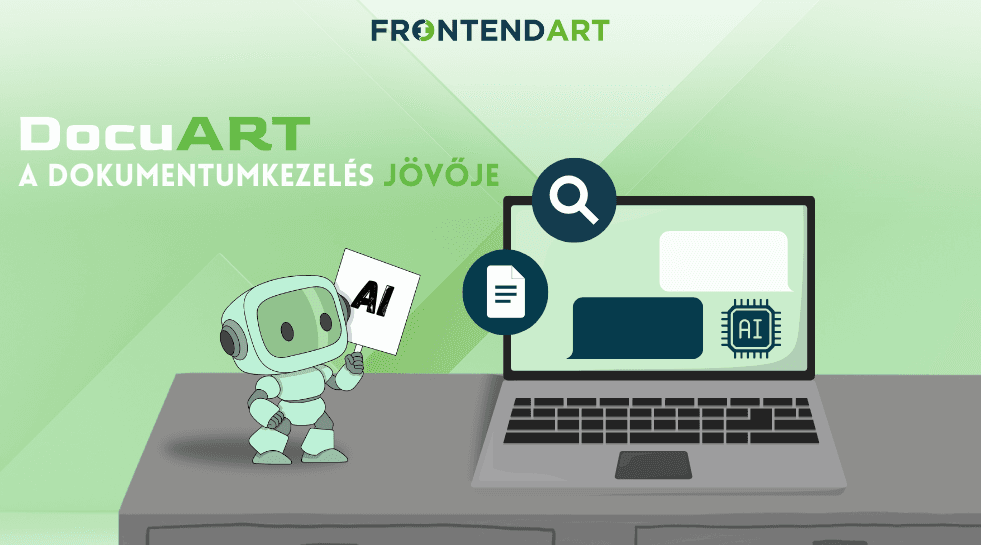In the era of digital transformation, companies place increasing emphasis on optimizing internal workflows and supporting employees. In this context, implementing a workflow-supporting chatbot can be extremely beneficial.
Below, we present the main development steps and benefits of our system, DocuART.
What inspired the development of DocuART?
Just like any other company, we maintain a wide range of documentation and process descriptions available for employees. These materials can span tens or even hundreds of pages, making it difficult to digest and learn their contents—especially for new hires.
This sparked an idea: how much easier would it be if we had a virtual assistant that could instantly answer any question about internal processes or documents? The primary goal of DocuART is to support internal workflows and assist and inform employees.
We provide the chatbot with all corporate documents and written process materials. The system learns this content and extracts the required data, enabling it to provide accurate answers to employees' questions.
Behind the Scenes of Development
In the first stage of DocuART's development, we created an interactive user interface that allows users to query information from publicly available documents. Key development tasks were:
- Structured data extraction from PDF and docx documents
- Optimized data storage using vector-based and NoSQL databases
- Designing an intelligent context-generation mechanism
- Robust backend and intuitive user interface creation
- Application containerization for flexible deployment and scaling
- Comprehensive testing and documentation
In the second stage, our goal was to enable the system to handle confidential information and process special types of documents. DocuART became capable of securely managing and integrating private documents, and processing internal memos, process descriptions, and FAQs. We also integrated Azure cloud services as part of this phase.
These enhancements made the system more versatile while ensuring full security and sensitive enterprise data management.
In the third stage of development, the application's capabilities were further enhanced to utilize structured information stored in databases. Key tasks included semantically annotating database schema elements by adding metadata and mapping relationships, integrating flexible data sources, and developing an intelligent database query assistant (natural language interface for SQL generation). Finally, we implemented a complex assistant based on Langchain, concluding the stage with comprehensive testing and documentation. DocuART can now combine database-sourced information with its existing knowledge base, resulting in more accurate and detailed answers.
Do Chatbots and Operations Go Hand in Hand?
While the use of virtual assistants for internal process support is still in its infancy in the corporate world, it's clear that implementing a workflow-support chatbot can significantly boost operational efficiency. Most business leaders don't realize that employees should be treated like satisfied customers. The chatbot we developed aims to support clear and efficient internal communication, reduce response times, and provide accurate answers to employees. Satisfaction drives engagement and loyalty, benefiting the company in the long term.
The phased development strategy ensures continual improvement of the system and increasing value for users. With advanced data extraction and processing, secure document management, and smart database integration, we have created a robust, scalable, and intelligent chatbot that remains sustainable and expandable long term.
